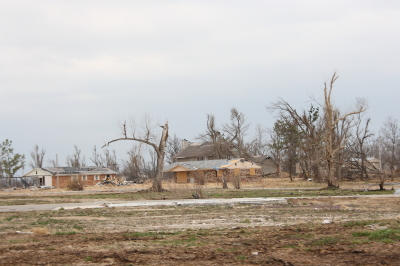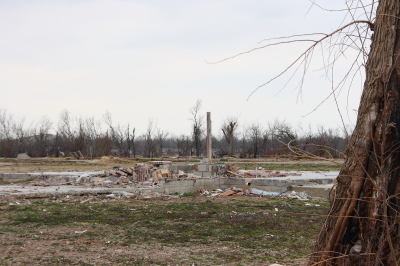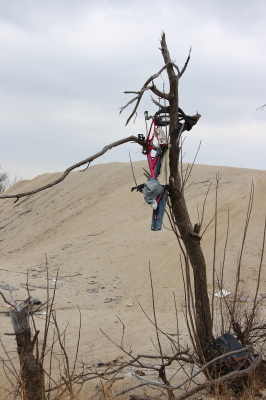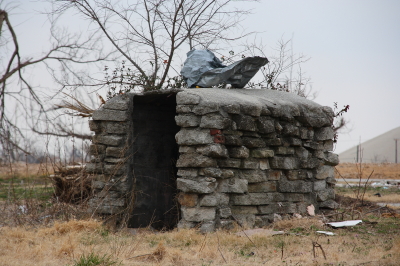On May 10, 2008, the town of Picher, Oklahoma, sustained a blow from a massive EF-4 tornado. I use the word “sustained” because saying that the town “survived” the tornado wouldn’t be accurate. Seven people lost their lives in a community that was for all intents and purposes already dead. The tornado was just the last, devastating twist in a place torn asunder by the very industry that once comprised its economic backbone. Ghost towns don’t survive; they just fade into oblivion, and there in far northeast Oklahoma, less than a mile south of the Kansas border, Picher–dubbed by the media as “America’s Most Toxic Town”–had been fading long before the tornado loomed on the horizon to finish the job.
It is an eerie thing to visit a tornado ghost town. Back in spring of 2009, my buddy Bill Oosterbaan and I drove through the empty streets that thread beneath the massive, brooding hills of lethal “chat” left from the city’s lead and zinc mining operations. The mining ceased in 1967, leaving residents to deal with the potential for cave-ins, a tainted water supply, and a poisoned environment that earned their little community the dubious status of poster child for the Tar Creek Superfund.
On the south end of the town, you can see where the tornado blew through. In a thriving city, rebuilding would have largely erased the scars, but no rebuilding will ever take place in Picher, and tornado trash remains strewn across the landscape. Fifty years from now, things probably won’t look all that different from the way they are today. Time means nothing to a ghost.
But I’ve already written more than I had planned to. My initial intention was to steer you toward my previous article on Picher that I posted last year, which includes photos of the tornado-damaged part of town plus my uncomfortable reflections on my visit there. Picher is not large, nor is it pretty, and it’s certainly not inviting, but it is a place you’re not likely to forget.






